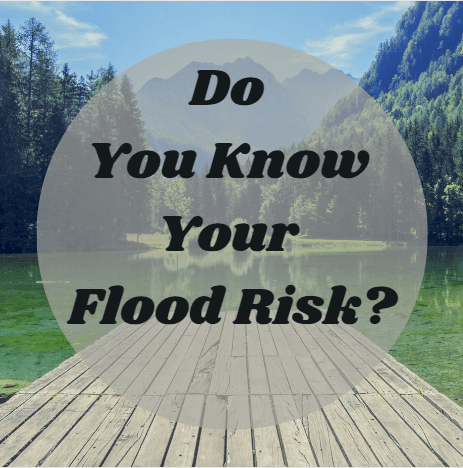When Hurricane Harvey hit Southeast Texas in 2017, it posed a real-life stress test for flood risk management plans in a very susceptible region. Southeast Texas failed that examination. More than half of the properties flooded were outside of the city- and nationally defined 100-year floodplains.
That hurricane prompted a complete reassessment of Houston's zoning restrictions, highlighting the country's system for monitoring and reporting flood hazards to property owners and prospective purchasers.
At least 6 million American families are unaware that they live in dwellings with a 1% probability of flooding each year, putting them in a "100-year" flood zone. This represents over 70% more residences at high risk of flooding than there are in the Federal Emergency Management Agency's Special Flood Hazard Areas, which determine eligibility for the National Flood Insurance Program.
This amount is expected to climb significantly in the coming decades as a result of climate change consequences such as sea level rise, which will make hurricane storm surges more severe, as well as precipitation extremes.
The climate is changing, and flood risk affects the housing market.
A rising temperature is threatening to ruin the housing industry, especially if the risk is not adequately addressed. Homeowners may be trapped in houses that are literally and financially underwater, and insurers and lenders may face their own financial crisis.

The report, produced by the nonprofit flood research and communications organization First Street Foundation, aims to level the playing field between buyers and sellers by democratizing specialized flood risk analyses that insurance companies and consulting firms produce but charge exorbitant fees to access.
A prospective buyer may now view a property's flood risk score, known as the "Flood Factor," as well as a map containing flood statistics for 142 million homes in the Lower 48 states.
On its website, First Street offers free property-level mapping. The First Street analysis assigns each property a "Flood Factor," which is a score on a 10-point scale, based on peer-reviewed models and an approach that considers both the changing risks of flooding and the probable depths of each flood. This allows prospective buyers to better understand the flood probabilities associated with a specific property.
Not knowing your flood risk is extremely... risky.
More information about potential future flood hazards may have made a significant impact on someone who could have purchased a property in Houston's Meyerland area in late 2014. It would have been useful to have that information. At the very least, you wouldn't have been as surprised.
You can make sure that the house you buy, despite requiring flood insurance, has never before flooded. But you have no clue how vulnerable it would be to floods in the future — particularly in the very near future.
A heavy rainstorm the next spring can lead to half a foot of water in the house. You are forced to relocate for five months while your home is being rebuilt. The next year, another flood took one of your automobiles as water crept up to the front door.
Hurricane Harvey and its record-breaking rainfall dumped 212 feet of water. Everything had gone wrong. This time, the families had to relocate for eight months. They spent hundreds of thousands of dollars to elevate their houses 6 feet higher than they were when they acquired them, in addition to gutting them again.
Eventually, you may have to take out loans, you will have no prospect to sell the property and no certainty that the next flood will not claim everything you are left with or your own life.
A dreadful scenario, isn't it? And the most ironic thing is that all that could be easily avoided if you put some extra effort into researching the flood risk of your property.
In-land properties face the same flood risk as coastal homes.
State-by-state research reveals where flood danger is now underappreciated, as well as where it may skyrocket in the coming years.
According to First Street's forecast, the number of homes at high risk of flooding will rise the most in Louisiana, Delaware, New Jersey, Florida, and South Carolina by 2050. Each is a coastal state that is vulnerable to storm surge-related floods and sea level rise. However, flood risks will rise in inland states as well, with a 5.4 percent increase in the number of houses at high risk in Ohio, a 3.2 percent increase in Kentucky and Tennessee, and a 7.7 percent increase in Idaho.
Furthermore, because First Street's models include flooding from significant rainfall events, cities with small locations within FEMA's 100-year flood zones, such as Chicago, rank high on their list of places with undervalued risk today. According to First Street's estimate, 13% of houses in the city are at high risk of flooding, mostly due to flash flooding from severe rainfall. This compares to fewer than 1% of homes at the same degree of danger as determined using FEMA's flood maps for the city.
What you can do right now.
Knowing your flood risk will help you take proactive measures and protect your property from water damage or even destruction in case of flooding.
And while flood control methods may vary depending on the level of flood risk for your house, your terrain, and the structural peculiarities of the building itself, some anti-flooding solutions are universal and can be equally efficient in all imaginable cases.
For example, flood barriers are so versatile that they may not only be used to block doors, gates, and any other kind of passage but also be used as hurricane shutters in case of disaster.
Lightweight yet robust, modern flood barriers for homes are easy to install and remove, don`t require much storage space, and will serve you for many years without losing their efficiency.
Contact Dam Easy today to learn more about modern flood barriers and other flood control solutions that will help you avoid risks and losses and ensure the safety of your house in the face of the most severe flooding.
DamEasy防洪闸门坝 -终极防洪

$899.00
大坝容易®防洪闸门大坝 洪水在世界各地越来越普遍。曾经的百年现象,现在是房主必须面对的季节性趋势。 这正是为什么你需要这个大坝容易防洪闸门大坝! 作为重型和凌乱沙袋的一个很好的替代品,这个屏障提供了第一道防线,防止水进入你家的门窗。当洪水发生时,快速行动的能力至关重要。此防洪屏障可在 5 分钟内安装,为您提供可靠的防洪保护! 不要等到为时已晚。得到这个防洪屏障门坝,现在保护你的房子! … Read More



